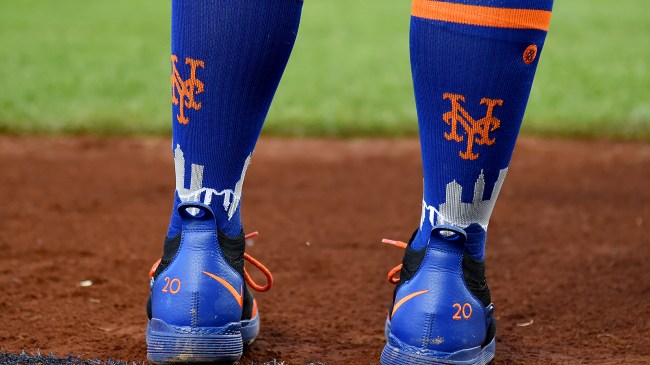
Getty Image
There weren’t many reasons to think the Mets were going to be competitive heading into the 1969 MLB season when you consider the team had failed to sniff the playoffs while posting a losing record in its first seven seasons of existence tracing back to 1962. However, they not only made the postseason but ended up winning the first World Series in franchise history with a little help from some shoe polish that sparked a fair amount of controversy.
There’s a reason the team New York fielded in 1969 is referred to as the “Miracle Mets” (a.k.a. the “Amazin’ Mets”). They seemingly had no business competing in the newly formed National League East, but manager Gil Hodges more than managed to improve on the progress the team had made during his inaugural campaign in 1968 while leading them to a 100–62 record.
At the time, only four teams earned the right to compete in the playoffs, and the Mets made quick work of the Braves in the NLCS before heading to the World Series to take on a Baltimore Orioles squad that boasted notable names including future Hall of Famers Frank Robinson, Brooks Robinson, and Jim Palmer.
The Mets seemed outmatched on paper, and while the Orioles took the first game of the series, the Mets won the next three and headed to Shea Stadium on October 16th with the chance to wrap things up on their home turf. They were eventually able to do exactly that—although they needed to engage in a little bit of gamesmanship to cap off a championship-clinching comeback.
The “Shoe Polish Incident” that led to the Mets winning the World Series for the first time
The Orioles were sitting on a 3-0 lead when Mets left fielder Cleon Jones headed up to the plate in the bottom of the sixth inning in the hopes of giving his team a spark against Orioles pitcher Dave McNally (who’d already contributed to his own cause with a two-run homer in the top of the third).
It appeared McNally hit Jones with a pitch that struck the batter in the foot before the baseball made its way into the New York dugout, but home plate umpire Lou DiMuro declined to give the outfielder first base after ruling he’d managed to dance away from contact.
A similar scene had unfolded in the top of the frame after DiMuro also deprived Frank Robinson of a free base when he appeared to be hit by a pitch (the ump claimed it hit the outfielder’s bat before striking him, although replays determined he should’ve been awarded first base in an era where those calls couldn’t be reviewed).
However, things took a turn when Hodges emerged from the dugout with a baseball in tow before showing it to DiMuro, who told Jones to head up the basepath after determining a blotch of shoe polish on the rawhide was enough evidence to prove he had, in fact, been hit by the pitch.
That development didn’t sit well with the Orioles, and while Baltimore manager Earl Weaver attempted to plead his case, the ruling stood. Jones scored when Donn Clendenon went deep on the ensuing at-bat to cut New York’s deficit to a run, and they tied things up the following inning before taking a 5-3 lead in the bottom of the eighth.
That was the score that stood when the Mets were crowned World Series champs, which sparked a chaotic scene in Queens as thousands of fans rushed onto the diamond while both teams scrambled for the safety of the locker room.
There’s still a debate over whether or not Jones was actually struck by the pitch that sparked the Shoe Polish Incident; he maintains he was, and it’s hard to imagine the baseball would’ve ended up in the Mets dugout if he hadn’t when you take a look at how it bounced on the play in question.
With that said, multiple guys who were in the dugout said Hodges made sure he had the evidence to support his case.
Mets pitcher Jerry Koosman claims the manager explicitly instructed him to rub the baseball on his cleat as an insurance policy before he headed out to complain to the umpire, while outfielder Ron Swoboda said it got mixed up in a pile of balls and Hodges made sure to grab one that had an incriminating black mark on it (they both acknowledge it’s likely Jones was hit by the pitch in question).
At the end of the day, the Orioles can point to plenty of other factors that led to the loss, and the Mets still would’ve had a couple of chances to put the World Series away even if they’d come up short in Game 5. Baltimore also bounced back to win a title the following year, so things largely worked out for both sides in the end.